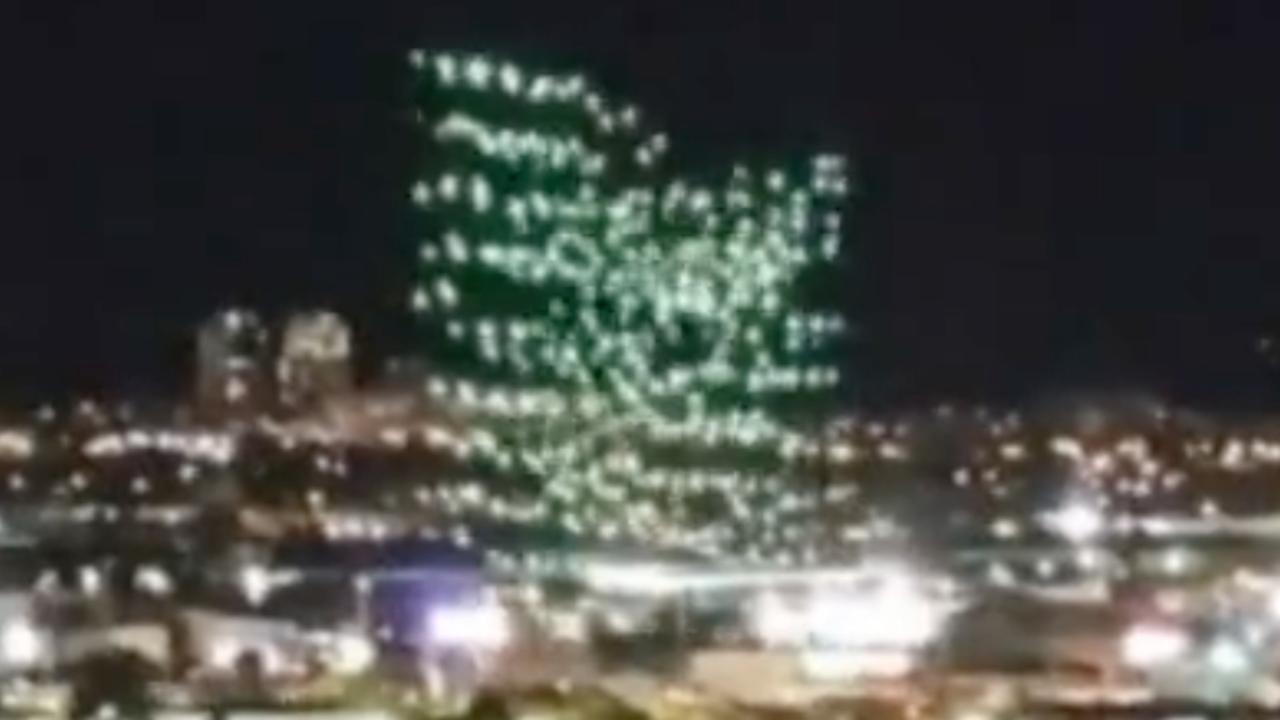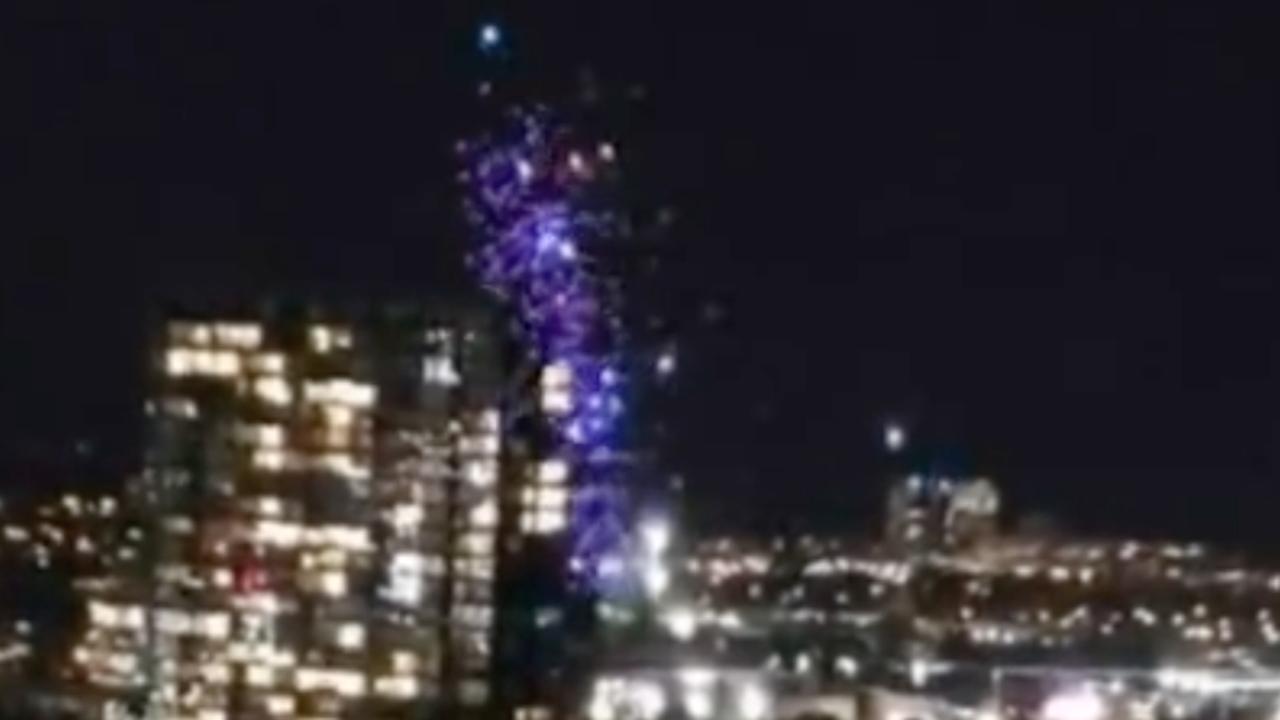Orlando drone show malfunction: A spectacular drone display turned unexpectedly chaotic, leaving spectators and organizers alike questioning safety protocols and technological reliability. This incident serves as a crucial case study, highlighting the potential risks involved in large-scale drone operations and prompting a review of existing safety measures and technological advancements. We will delve into the technical causes, safety regulations, and aftermath of this event, examining both immediate and long-term consequences.
This analysis will cover the specific events, technical failures, and subsequent investigations, providing a detailed timeline and exploring potential preventative measures for future drone shows. We’ll examine the role of technology, pilot training, and regulatory oversight in ensuring public safety during such events, drawing lessons from this particular malfunction to improve the safety and reliability of future drone displays.
Orlando Drone Show Malfunction: A Comprehensive Analysis
The recent malfunction during a drone show in Orlando has sparked discussions about safety protocols, technological limitations, and public perception of drone technology. This article delves into the incident, exploring the technical causes, safety regulations, impact, and preventive measures that can be implemented to mitigate future occurrences.
Incident Overview
A significant drone show malfunction occurred on [Insert Date], at approximately [Insert Time], at [Insert Location in Orlando]. The show involved [Insert Number] drones, specifically [Insert Drone Model], each weighing approximately [Insert Weight] and equipped with [Insert Key Technical Specifications, e.g., GPS, high-intensity LED lights, etc.]. The malfunction began when [Describe the initial malfunction, e.g., a group of drones deviated from their programmed flight path].
This led to [Describe subsequent events, e.g., several drones colliding, some falling to the ground]. The incident concluded after approximately [Insert Duration] minutes, with emergency personnel securing the area.
A timeline of events is presented below:
- [Time]: Show commences as scheduled.
- [Time]: First signs of malfunction observed.
- [Time]: Multiple drones deviate from flight path.
- [Time]: Collisions reported among drones.
- [Time]: Drones begin to fall.
- [Time]: Show organizers halt the event.
- [Time]: Emergency services arrive on scene.
- [Time]: Area secured.
Technical Causes
Several technical factors could have contributed to the malfunction. Potential causes include GPS signal interference, software glitches within the drone’s flight control system, communication errors between the drones and the control station, or battery failure. A cascading failure, where a malfunction in one system triggers failures in others, is also a strong possibility. For example, a GPS failure could lead to disorientation, resulting in collisions and subsequent damage to other drones’ systems.
Manufacturer defects, such as faulty components or inadequate design features, cannot be ruled out.
A hypothetical technical diagram would show interconnected systems: GPS, flight controller, communication module, power system, and the propulsion system. Each system would be represented by a node, with lines indicating data flow and interdependencies. Potential failure points would be highlighted, illustrating how a single point of failure could propagate through the system.
Safety Protocols & Regulations
Drone shows in Florida are subject to both federal (FAA) and potentially local regulations. These regulations typically cover aspects such as pilot licensing, airspace restrictions, operational limits, and emergency procedures. Best practices in drone show safety include redundant systems (e.g., backup GPS, communication links), thorough pre-flight checks, and real-time monitoring of drone status. Comparing the safety measures implemented during the Orlando show to these best practices would require a detailed review of the show’s operational plan and emergency response procedures.
The Orlando drone show malfunction highlights the complexities of large-scale drone operations. Such incidents underscore the need for robust safety protocols, a concern amplified by recent events like the ukraine drone attack on russia , which demonstrated both the potential and the inherent risks of drone technology in conflict. Understanding these risks is crucial for preventing future malfunctions, whether in entertainment or military contexts.
Areas for potential improvement could include enhanced redundancy in the drone’s control system, more robust communication protocols, and improved real-time monitoring capabilities. Implementing advanced safety features like automatic emergency landing systems could also significantly reduce the risk of incidents.
Impact & Aftermath
The malfunction caused immediate concern among the audience. [Describe the audience reaction]. While details on injuries and property damage are still emerging, [Report any known injuries or property damage]. Event organizers immediately halted the show and initiated their emergency response plan. Emergency services responded swiftly, securing the area and ensuring public safety.
The recent Orlando drone show malfunction highlighted the complexities of large-scale aerial displays. It made me think about the logistical challenges of tracking something far more whimsical, like Santa Claus; perhaps one could try contacting the norad santa tracker phone number for insights into managing a complex, widely anticipated event. The Orlando incident certainly underscores the need for robust safety protocols, regardless of whether the objective is holiday cheer or dazzling light shows.
A chronological list of key events following the malfunction:
| Date | Time | Event | Description |
|---|---|---|---|
| [Date] | [Time] | Malfunction Occurs | Multiple drones malfunction and fall. |
| [Date] | [Time] | Show Halted | Organizers immediately stop the show. |
| [Date] | [Time] | Emergency Services Arrive | Police and emergency medical personnel arrive on scene. |
| [Date] | [Time] | Area Secured | The area is secured and deemed safe. |
Preventive Measures
Several measures can reduce the likelihood of future malfunctions. These include regular maintenance and inspections of drones, rigorous pilot training, and the implementation of robust safety protocols. Regular software updates and the use of redundant systems are also crucial.
- Implement redundant systems (e.g., backup GPS, communication links).
- Conduct thorough pre-flight checks.
- Provide extensive pilot training and certification.
- Develop and regularly update emergency response plans.
- Employ real-time monitoring systems for drone status and environmental conditions.
- Regular maintenance and inspection schedules for all drones.
Public Perception & Media Coverage, Orlando drone show malfunction
Media coverage of the incident ranged from initial reports focusing on the spectacular failure to later analyses exploring the technical causes and safety implications. Public reaction was a mix of surprise, concern, and some skepticism towards drone technology. Social media was abuzz with discussions, ranging from humorous memes to serious concerns about safety regulations.
Examples of media headlines might include: “Drone Show Chaos: Spectacular Failure in Orlando,” “Safety Concerns Raised After Drone Show Malfunction,” “Technical Glitches Cause Drone Show to Go Wrong”. Social media posts would likely reflect a spectrum of opinions, from awe at the visual spectacle to criticism of the safety measures in place.
Illustrative Example

A typical drone show flight path could be visualized as a series of interconnected points, each representing a waypoint for a drone. The path would be represented by smooth curves and lines, with different colors indicating different drone groups. Potential points of failure could be highlighted using a different color or shape, such as a red “X” to denote areas with known GPS interference or communication black spots.
Each drone would be depicted as a small icon, moving along its assigned path.
The recent Orlando drone show malfunction highlights the inherent challenges in large-scale drone displays. The incident prompts questions about the reliability of various drone systems, leading many to consider the advanced features and safety protocols offered by companies like sky elements drones. Ultimately, the Orlando mishap underscores the need for robust technology and rigorous testing to ensure seamless and safe drone performances in future events.
A potential malfunction scenario could involve a sudden loss of GPS signal for a group of drones. This would be depicted by the drones’ icons veering sharply off their designated paths. The visualization would show the drones colliding with each other or other objects, resulting in a cascade of failures and ultimately causing the drones to fall from the sky.
The visualization would be further enhanced with labels indicating altitude, speed, and proximity to other drones.
The Orlando drone show malfunction underscores the critical need for robust safety protocols, rigorous technological oversight, and comprehensive pilot training in the rapidly expanding field of drone technology. While technological failures are inherent risks, a multi-faceted approach that combines stringent regulations, proactive maintenance, and thorough incident analysis can significantly mitigate the likelihood of future malfunctions. The incident serves as a valuable reminder of the importance of continuous improvement and adaptation within this evolving industry to safeguard both public safety and the continued growth of drone technology.
Question & Answer Hub: Orlando Drone Show Malfunction
What type of drones were involved in the malfunction?
Specific drone models and their technical specifications would need to be obtained from official reports or event organizers.
Were there any injuries reported as a result of the malfunction?
The extent of any injuries, if any, would need to be confirmed through official incident reports and news coverage.
What was the estimated cost of the damage caused by the malfunction?
Determining the financial impact would require access to insurance claims, repair costs, and other relevant financial data.
What legal ramifications, if any, resulted from the malfunction?
Any legal proceedings or consequences would need to be ascertained from official court records or legal news sources.


